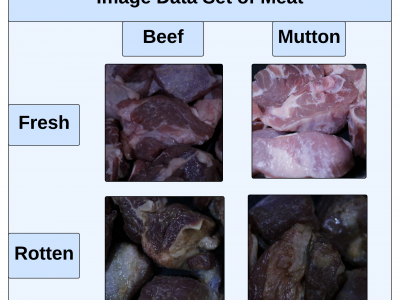Datasets
Standard Dataset
IoT Based Meat Freshness Classification Using Deep Learning

- Citation Author(s):
- Submitted by:
- Zarif Wasif Bhuiyan
- Last updated:
- Fri, 04/18/2025 - 19:34
- DOI:
- 10.21227/fmn3-ec66
- License:
Abstract
The main objective of this research paper is to address challenges faced in accurately differentiating mutton and beef cuts, as well as identifying meat freshness stages in the food sector. For this reason, we undertook the development of a smart IoT device by combining gas sensor technology and deep learning while ensuring smartness and connectivity. As a part of this study, We employed an innovative approach involving image processing methods along with gas sensor data to determine a method for meat classification based on quality and freshness levels. Since once gas pressure had been measured by the sensor it had already initiated several procedures, We developed a methodology for examining changes and patterns in gas levels thereby significantly increasing the results’ robustness and real-time processing. In summary, We employed Convolutional Neural Networks (CNN), Deep Neural Networks (DNN), and K-Nearest Neighbors (KNN) as classification algorithms, while gas sensors (MQ135, MQ136, and MQ4) were utilized to detect gasses emitted during various stages of meat spoilage. Results of the preliminary experiment showed promising outcomes, with the CNN model providing a classification accuracy of almost 100%, DNN at 95% and KNN at 96%. In summary, We were able to develop the deep learning methodologies and integrate gas sensor technology aimed at assessing meat quality and freshness along with a system that identifies stages of meat spoilage.
Dataset Explanation file
More from this Author
Documentation
| Attachment | Size |
|---|---|
| 14.25 KB |
 518 Views
518 Views






Comments
Good